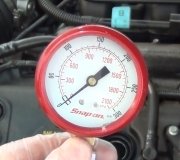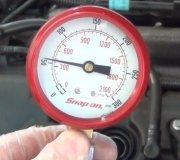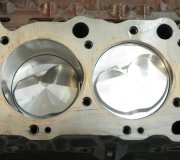Best test would be to perform a cylinder leakage test. A compression test only shows there is no compression. A cylinder leakage test will tell you why. The piston is placed at top-dead-center on the compression stroke, then compressed air is forced in through the tester. The gauge will show the percent leakage, and you can look in four places for the cause of excessive leakage. If the exhaust valve is leaking, you will hear hissing at the tail pipe. For a leaking intake valve, the hissing will be at the throttle body. Worn piston rings or a hole in the piston will be heard at the "oil" cap or dip stick tube. If the cylinder head gasket is leaking, you will see a steady stream of tiny bubbles in the radiator.
A fifth suspect when there are two low cylinders right next to each other is the cylinder head gasket between those two. To identify that, you will hear the hissing at the second spark plug hole, and for at least one of the cylinders, the percent leakage will go down when the other spark plug is installed. It depends on whether both valves are closed on the second cylinder while the first one is under test.
Friday, October 20th, 2017 AT 2:08 PM




